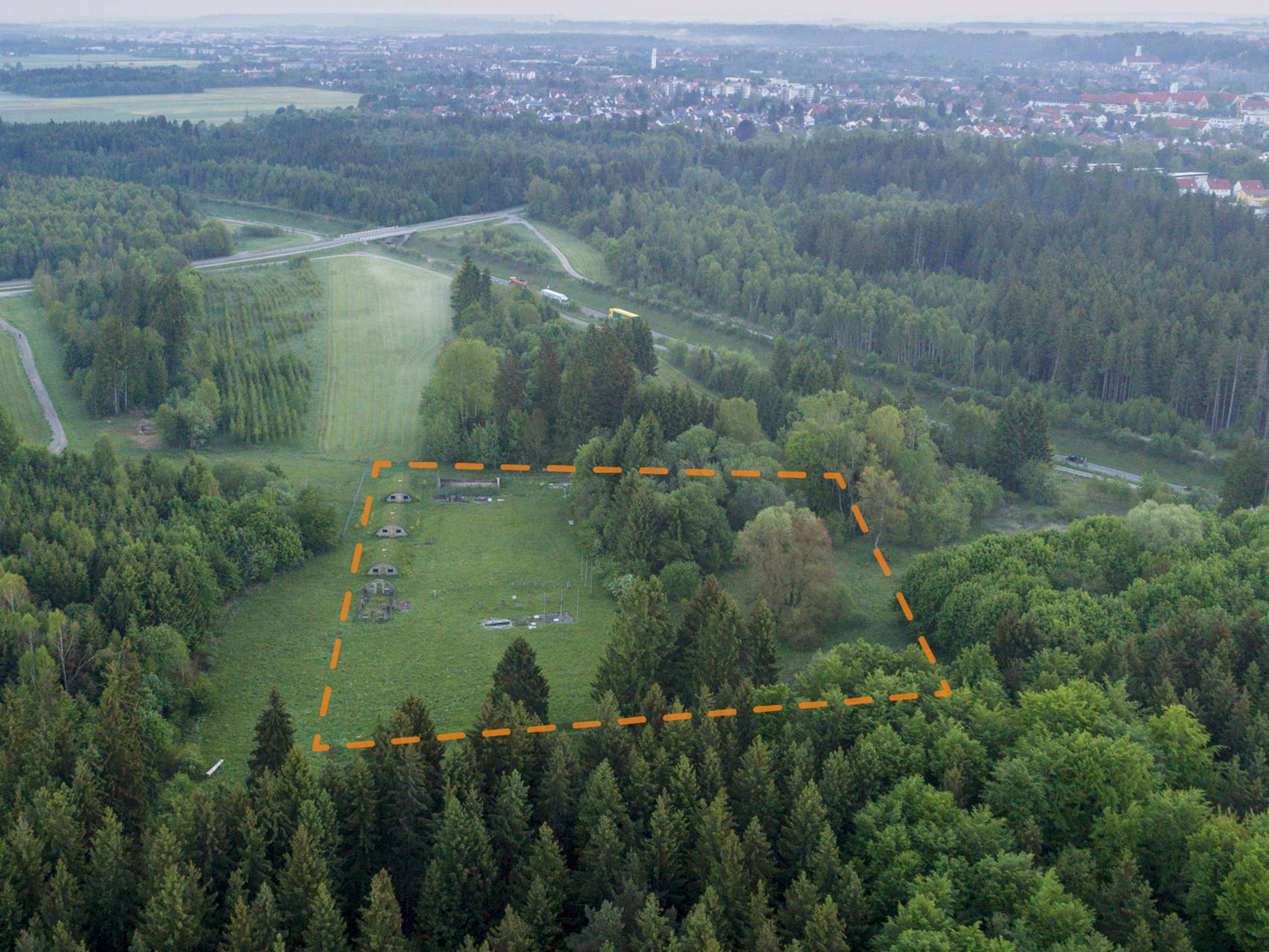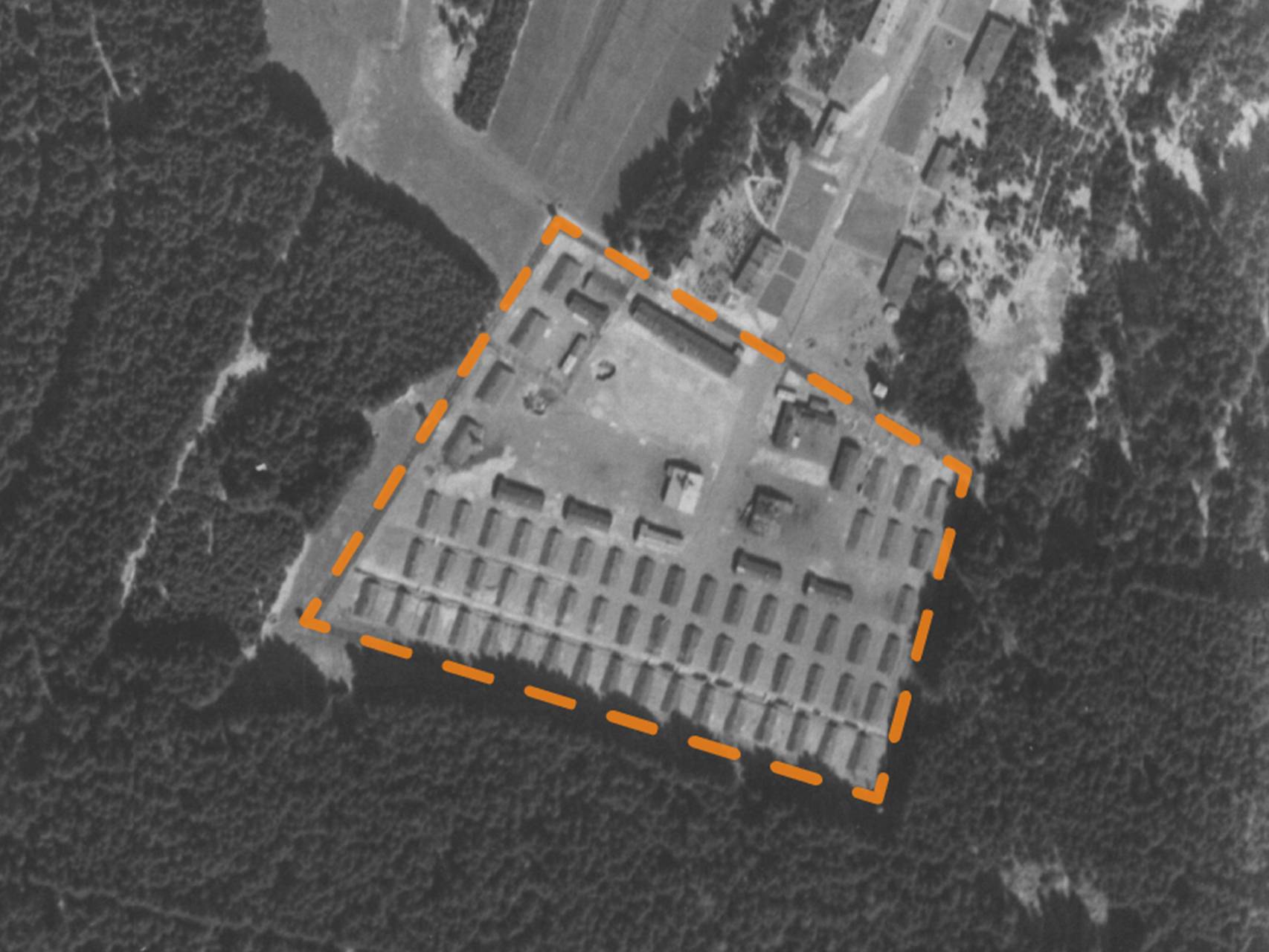Kaufering VII (Erpfting)
The first concentration camp prisoners arrived at Kaufering VII camp in early October 1944. An occupancy report from spring 1945 lists 1,658 male and 64 female prisoners.
The majority of prisoners were Jews from Hungary, Poland, Lithuania, Italy, Greece and Czechoslovakia. Regardless of age and sex, concentration camp prisoners were used for the construction of the armament bunkers. For instance, they had to erect a concrete parts plant for the company, Held & Franke and work on a railroad track.
In January 1945, the SS declared Kaufering VII concentration subcamp a sick camp. The SS transferred weak and ill patients as well as those incapable of work from other parts of the Landsberg/Kaufering concentration subcamp complex. It was temporarily put in quarantine owing to a typhus epidemic. The dead from Kaufering VII were buried in nearby mass graves. According to estimations by the Bavarian State Compensation Office, some 2,000 people are buried in what is now Erpfting concentration camp cemetery.
Those prisoners who were physically run down, but were expected to become fit for work again in the foreseeable future, even if only partly, were moved together into Camp VII.
– Quarterly Report by the camp physician at Dachau concentration camp
List of sources
Today a few foundation remains can still be found in the eastern part of the former camp premises. An information board has commemorated the camp since the year 2010.
Three clay pipe buildings are preserved in the western area. They are part of the European Holocaust Memorial, which is maintained by the Europäische Holocaustgedenkstätte Stiftung e.V.
More information is available at: www.landsberger-zeitgeschichte.de and www.buergervereinigung-landsberg.de.
For more in-depth insights into the Landsberg/Kaufering subcamp complex, click here to go to the overview page.



